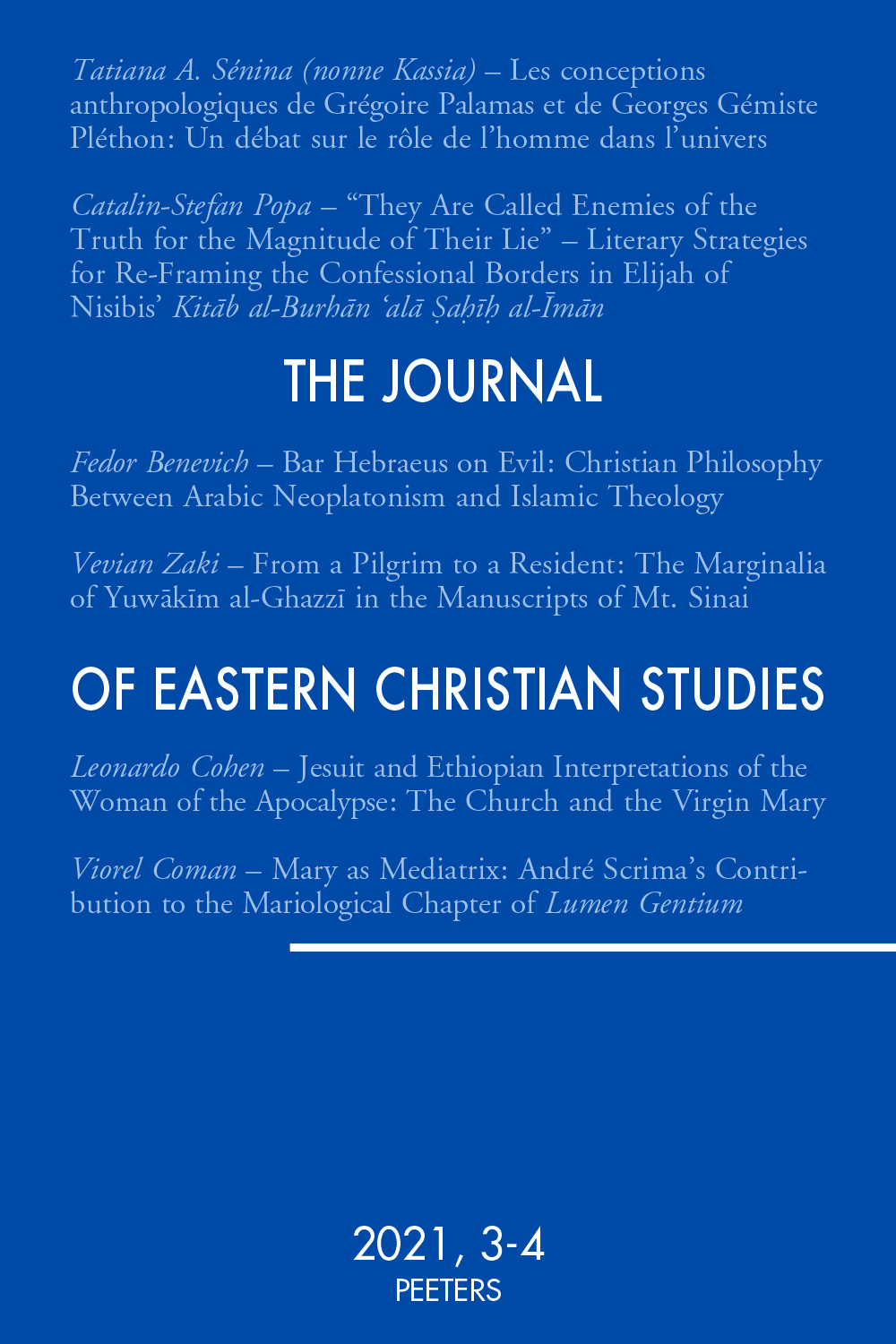 previous article in this issue previous article in this issue | next article in this issue  |

|
Document Details : Title: Christ's 'Being' and 'Activity' Subtitle: Some Aspects of the Development of Armenian Christological Vocabulary from its Origins to the Tenth Century Author(s): DORFMANN-LAZAREV, Igor Journal: Journal of Eastern Christian Studies Volume: 68 Issue: 3-4 Date: 2016 Pages: 231-254 DOI: 10.2143/JECS.68.3.3191687 Abstract : This chapter discusses the main stages of the development of Armenian theological vocabulary. At the very beginning, Armenian theological thought evolved under the direct influence of the Antiochene exegetical school, whose legacy was transmitted to Armenia in Syriac. Also after the christianisation of the Armenian kingdom by Gregory the Illuminator (c.313/14), which had established privileged ties between this country and Cappadocia, the Syriac world continued to exercise its influence on Armenia. Before the reception, in 432-35, of the Œcumenical Council of Ephesus, the two sources of Armenian theological vocabulary, the Syriac and the Greek, had thus introduced into the Armenian world two exegetical and doctrinal trends. These divergent schools of thought ought to stand the test of the Christological controversies in which Armenia came later to be involved. The aspiration to abide by the orthodoxy of the first three Œcumenical councils favoured the development in Armenia of a new abstract terminology modelled on the Greek, and this resulted in a partial rejection of Antiochene terminology. After the rift with the Byzantine Church in the middle of the sixth century, the Armenians elaborated their particular doctrinal positions. The adoption by the Armenian Church of miaphysite Christology and the ensuing domination of Alexandrine exegetical tradition in Armenia did not, however, entail a complete abandonment of Antiochene vocabulary. The theological synthesis attained in Armenia by the beginning of the eighth century permitted the integration of heterogeneous expressions in a symbolic worldview. I discuss the way in which the evolution of Armenian theological terminology reflected Mesopotamian, Syrian and Byzantine cultural influences and the doctrinal positions adopted by the Armenian Church before the middle of the eighth century. My focus is on the terminology of ‘being’, ‘existence’, ‘nature’, the notion of consubstantiality, the ‘union’ and the ‘mixture’ of natures, ‘subject’, ‘self’, ‘person’ and the description of the Incarnation. |
